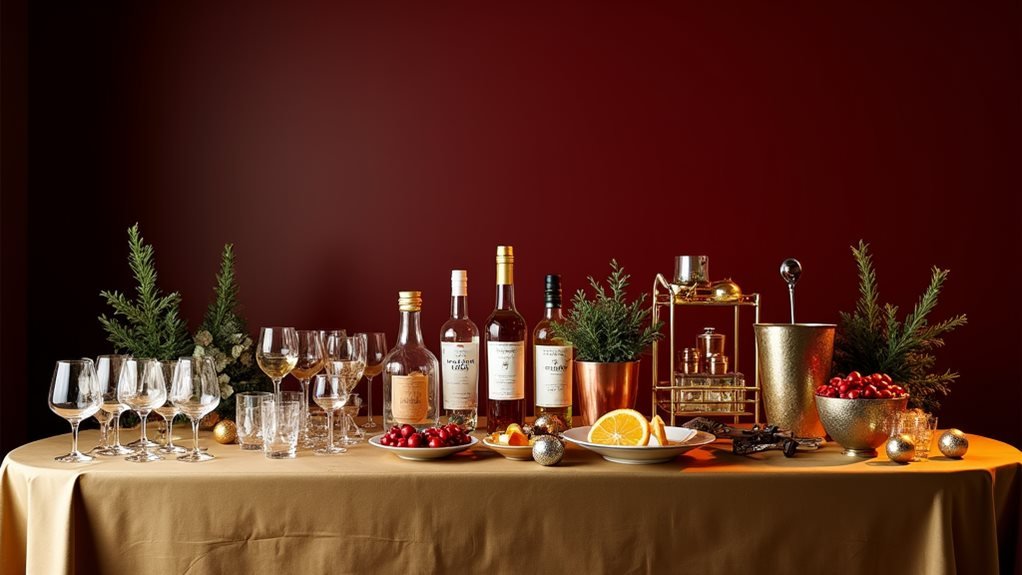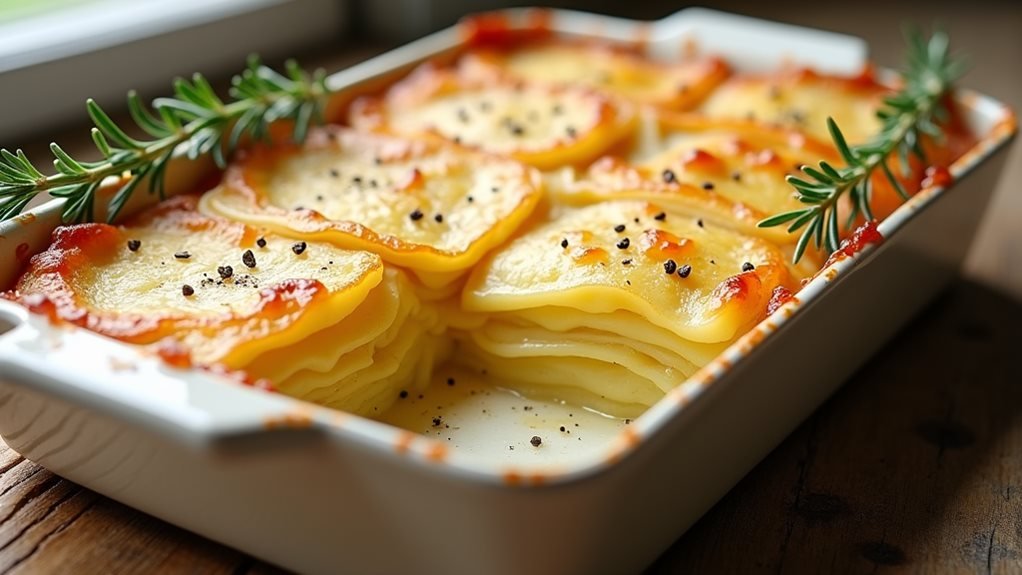This Articel lobster demonstrates how to cook and shell whole lobster, removing every ounce of lobster meat from the shell, including the delicious claws, legs, knuckles, and head. The guide goes over how to kill your lobster humanely and safely, how to cook lobster, and of course, how to shell. (Also see Guide to Selecting and Preparing the Best Beef Cuts for Steaks)
If you’re like me, you tend to treat yourself to a great dinner out when you’ve accomplished a goal in your personal life. Often, one of the first things I look for on the menu when I am treating myself to a nice dinner is lobster. With its naturally sweet taste combined perfectly with some drawn butter, lobster can be a decadent dining experience but is usually reserved for special occasions. (Check out Must-Try Gordon Ramsay Lobster Risotto)
What if you could have lobster more than a few times a year by skipping the restaurant and making it at home? The price of a lobster dinner at a nice restaurant can easily exceed $100 per person. While shopping for and preparing a lobster may seem above your current cooking skills, this guide will help you become an expert.
How to Cook Live Lobster on The Stove Humanely
- While the lobsters are chilling, bring 2 gallons of water to a boil in a large pot over high heat. Make sure your pot holds at least 3 gallons of water.
- Add the lobsters (leave the rubber bands on the claws for safety!) and 1/3 cup of salt to the pot. Use tongs to arrange the lobsters to ensure they are all submerged.
- Cover the pot, leaving the lid slightly ajar, and adjust the heat to maintain a gentle boil.
- Cook the lobsters for 8 minutes. Using tongs, transfer the lobsters to a baking sheet.
- Insert the thermometer into the thickest part of the underside of the lobster’s tail. The meat should register 140 degrees. Return the lobster to the pot for another 2 minutes or until the tail reaches the desired 140-degree temperature.
- Serve the lobsters immediately or set them aside until they are cool enough to remove the meat, which should be about 10 minutes. If you do not plan to eat your lobster immediately, you can refrigerate your cooked, cooled lobster meat in an airtight container for 24 hours.
How long Does it Take to Boil Multiple Lobsters?
When boiling multiple lobsters, the cooking time will depend on the lobsters’ size and the pot’s size. As a general rule of thumb, it takes about 10-12 minutes to boil a 1-2 pound lobster. If boiling multiple lobsters in a large pot, you can adjust the cooking time accordingly. For example, boiling two 1-2 pound lobsters can cook them for 15-20 minutes.
Overall, the cooking time for boiling multiple lobsters will vary based on the size and quantity of the lobsters being cooked. If boiling, you may need to cook four lobsters for 25-30 minutes. Ensuring that the lobsters are fully cooked before serving is important, as undercooked lobsters can be dangerous.
How to Shell and Prep Whole Lobster Meat
Preparing whole lobster meat can be intimidating, but it’s simple with the right technique. To shell and prep whole lobster meat, boil it for about 8-10 minutes or until it’s fully cooked. Next, remove the lobster from the pot and let it cool for a few minutes. To remove the tail, twist it off by holding onto the body and pulling the tail away from it. Use a pair of kitchen shears to cut down the center of the tail to expose the meat.
Overall, shelling and prepping whole lobster meat is a simple process that can be done with just a few basic tools. To remove the meat from the claws and legs, use a lobster cracker or the back of a knife to crack them open. Gently pull out the meat using a fork or your fingers. Once all the meat is removed, chop it up or use it in your preferred recipe.
How to Remove Lobster Meat from Shell
Preparing whole lobster meat can be intimidating, but it’s simple with the right technique. To shell and prep whole lobster meat, boil it for about 8-10 minutes or until it’s fully cooked. Next, remove the lobster from the pot and let it cool for a few minutes.
Once all the meat is removed, chop it up or use it in your preferred recipe. Overall, shelling and prepping whole lobster meat is a simple process that can be done with just a few basic tools.
So many cookbooks recommend using a knife to cut down the tail center, but I prefer keeping the tail in one piece. I recommend laying the tail on to its side, using both your hands, press down on the tail until you hear it crack.
Remove Tail Meat
- Holding flippers facing you, shell facing down, now with thumbs on the opposite sides of the tail. Pull back on both sides and open the shell to remove the tail meat.
- Tomalley acts as the liver and pancreas for the lobster. Quickly wash the tail meat with running water to remove any green tomalley. Pat tail meat dry with a paper towel. Finally, remove the green or dark vein from the tail meat center with a small paring knife.
Remove Claw Meat
- Twist the “arms” to remove the claws and the attached knuckles (2 small jointed sections) from the body. Now twist the knuckles to remove them from the claws and break the knuckles into two pieces at the joint using your hands or a lobster cracker. Finally, use a teaspoon or a skewer handle to push the meat out of the shell.
- Break open the claws using a lobster-cracking tool. To do this, first, crack one side, then flip over to crack the other side and remove the meat. An alternative method is to use seafood scissors to cut along the side of the claw.
Take Out Knuckle Meat
- Break open the knuckles using a lobster cracking tool by cracking one side and then flipping to crack the other side to remove the meat. You could also use seafood scissors and cut along the knuckle side like the claw.
- Wiggle the smaller hinged part of the knuckle to separate. Remove any meat with a skewer if stuck inside the small part.
End with Leg Meat
Twist legs remove from the body. Remove each leg one at a time, and place the legs flat on the countertop. Use a rolling pin, starting from the claw roll towards the end until pushing all the meat out the legs’ ends. Split open the leg tips that crack and release shell pieces into the meat.
Lobster Anatomy Overview
Lobsters have a unique anatomy, including a hard outer shell, a segmented body, and multiple pairs of legs and claws. The head contains the eyes, antennae, and mouthparts, while the thorax comprises segments that bear the legs and claws. The tail section of the lobster contains digestive and reproductive organs.
Lobster claws are used for catching and crushing prey, while the legs are used for walking and swimming. The outer shell of the lobster is made up of chitin, a hard, protective material that provides structure and protection. Understanding the basic anatomy of a lobster can help prepare and cook it properly.
Molting:
Lobsters molt about once a year, shedding their skin to grow. You want to be aware of whether or not a lobster is preparing to or just finished molting as it affects its meat quality.
You want to avoid cooking lobsters just before molting because they lose a lot of muscle mass to slip out of its shell. Conversely, as a lobster finishes molting, it has absorbed much water to fit into its new shell.
That additional water retention makes the lobster meat mushy. To ensure you don’t receive a soft shell lobster in the molting process, squeeze its shell, which should give slightly to your pressure.
Head:
A lobster’s nervous system is not centered in its head but distributed throughout its body, explaining why it is not killed instantly when a knife is placed through its head.
Claw:
The front legs of the lobster, also called pincers, contain tender meat for you to enjoy. The larger, meatier claw is called the “crusher,” while the smaller claw is known as the “cutter” and is far thinner.
Tail:
The tail is the portion of the lobster that most of us eat. Lobsters use their tails to escape from predators as they contain large flexor and extensor muscles made for rapid swimming with their fast-acting, short muscle fibers. At many restaurants, I will order the lobster tail.
Because collagen is more prevalent in muscle, it is no surprise that a lobster tail contains little fat but more collagen than in other crustaceans.
Meat:
Lobster meat comprises muscle fibers more similar to mammal muscle fibers than white fish. This difference in muscle fiber largely explains the texture between lobster meat and other fish options like sea bass or cod.
Lobster muscle fibers are still much shorter than those inland animals, though longer than those found in whitefish. That difference in muscle fiber length is why lobster meat does not flake when cooked as white fish does.
Buying Whole Live Lobster
When buying whole live lobster, there are a few important things to consider. Look for active lobsters in the tank or holding container, which is a sign that they are healthy and fresh. Avoid sluggish lobsters with cracked shells, as this can indicate poor health. When selecting a lobster, consider the size and weight of the lobster, as larger lobsters will have more meat but may be tougher. Generally, a 1-2 pound lobster is a good size for most recipes.
Overall, buying whole live lobster requires careful consideration of its health and size and proper transport to ensure its freshness. When transporting live lobsters, please keep them in a cool, moist environment and avoid exposure to extreme temperatures or direct sunlight. It’s also important to consider the season when buying lobster, as prices and availability vary throughout the year.
How to Choose Live Whole Lobster
Lobsters should be cooked fresh for both flavor and health reasons. When a lobster dies, enzymes in its body begin to break down the flesh and cause it to turn mushy.
While mushy meat does not sound appealing, deceased lobsters also are vulnerable to bacterial contamination that can cause food poisoning. Make sure your lobster is alive when you are ready to cook it, and make the death to finish cooking as quickly as possible.
Squeeze Body Check if Hard Shell or Soft Shell
Squeeze the sides of the lobster’s body to determine whether it’s a hard or soft shell. A softshell lobster will yield to pressure, while a hard-shell lobster will be hard and brittle.
Check to See How Much Lobster Weigh
In my recipes, I include the weight of the lobsters since lobsters can vary significantly in weight. If you are serving your lobster with clarified butter, you will want to know how much lobster meat you have to have enough clarified butter for you and your guests.
If you are serving softshell lobster, you may consider buying larger ones or two lobsters per person if the price is affordable. Markets don’t usually advertise if they are selling hard-shell or softshell, but you can always ask an employee in the seafood department.
Cooking Lobster Tips
When cooking lobster, there are a few important tips to remember. First, make sure the lobster is fully cooked before serving. A fully cooked lobster will have a bright red shell, and the meat will be firm and opaque. Overcooking can result in tough and rubbery meat, so keeping an eye on the lobster while it cooks is important. Another important tip is to season the cooking water with salt and any desired herbs or spices.
Cooking lobster requires attention to detail and careful monitoring to ensure a delicious and safe meal. When boiling lobster, it’s also important to avoid overcrowding the pot, as this can lead to uneven cooking. Finally, consider using a meat thermometer to ensure the lobster reaches a safe internal temperature of 145°F before serving. This will infuse the lobster with flavor as it cooks.
Choose Which Method to Cook Lobster
There are several methods for cooking lobster; the best one will depend on your preferences and the recipe you’re using. One common method is boiling, which involves fully submerging the lobster in boiling water and cooking for 10-12 minutes per pound.
Steaming is a gentler cooking method that can help preserve the delicate texture of lobster meat. This method is quick and easy and works well for most lobster recipes. Another method is steaming, which involves placing the lobster in a steamer basket over boiling water and cooking for about 9-10 minutes per pound.
Choosing the best method to cook lobster will depend on the desired texture, flavor, and cooking time. Grilling or broiling lobster is another option, which can add a smoky or charred flavor to the meat. When grilling or broiling lobster, it’s important to baste it with butter or oil to keep the meat moist. Finally, lobster can be baked in the oven, either whole or in individual portions, with various toppings and seasonings.
Stun Lobster by Freezing it Briefly Before Cooking
Unfortunately, there is no way to know how much a lobster suffers during the cooking process, but scientists agree that the lobster’s nervous system is more like that of an insect than a human.
It is sometimes recommended to stun a lobster by freezing it briefly before cooking, as this can help to minimize its distress and pain. To do this, place the live lobster in the freezer for about 15-20 minutes until it becomes lethargic and inactive.
After this time, remove the lobster from the freezer and proceed with the desired cooking method. While there is debate about whether this method reduces the lobster’s pain, it can be a humane and ethical approach for those concerned about the lobster’s welfare.
It’s important to note that the lobster should still be fully cooked before serving, regardless of whether it was stunned before cooking. Overall, briefly freezing a live lobster before cooking may be an option for those who want to minimize the lobster’s distress.
Check Tail Temp, Make Sure Lobster is Done Cooking
Most lobster recipes are accompanied by confusing or intimidating charts that tell you how long to boil your lobster based on factors including weight, whether they are hard shell or soft shell, and how many lobsters you are boiling in the pot.
The tail temperature ensures the lobster is fully cooked before serving. The internal temperature of the tail should reach at least 145°F (63°C) for the lobster to be fully cooked and safe to eat. To check the tail temperature, insert a meat thermometer into the thickest part of the tail to avoid touching the shell.
You can enjoy a safe and delicious lobster meal by checking the tail temperature and ensuring that the lobster is fully cooked. It’s also important to ensure the claws and legs are fully cooked, as these can take longer than the tail. The meat of a fully cooked lobster will be firm and opaque, with a bright red shell. Overcooking can lead to tough and rubbery meat, so monitoring the cooking time and checking the temperature regularly is important.
Frequently Asked Questions about Lobster
You can find answers to the most frequently asked questions about lobster.
Can I cook the lobsters in advance?
Yes, you can cook lobsters in advance if the time between cooking and consumption does not exceed 24 hours. Cook your lobsters as you normally would and set them aside for cooling (about 10 minutes). Extract the meat from the shells and store the meat in an airtight container in your refrigerator for up to 24 hours.
Why do lobsters turn red after cooking?
Lobsters are full of fast-twitch muscles, especially in their tails, used only for sudden movements. Fast-twitch muscles contain very little red protein pigment myoglobin (the compound that makes beef or pork red), so lobster’s tail muscles contain minimal color in their raw state.
The reddish color seen in cooked lobster results from the denaturation (the process in which proteins lose their structure) of the proteins during the cooking process, which releases the carotenoids allowing them to assume their natural red color. This also happens in lobster shells, turning them from brownish-green in live lobsters to bright red when cooked.
I recommend keeping your fingers safe and cooking your lobsters with the rubber bands remaining on the claws.
Why do lobsters need to be alive when you cook?
Lobsters are cooked alive for reasons related to both flavor and your health. First, the instant a lobster dies, enzymes within its body begin to break down the flesh and cause it to turn mushy.
Second, like other shellfish, deceased lobsters are vulnerable to bacterial contamination, leading to food poisoning. Keep yourself and your loved ones healthy, and cook only live lobsters.
However, high-end restaurants often kill several lobsters at the beginning of an evening’s dinner service, separate their claws and tails, store their room, and cook them to order throughout the night. Their lobster meat never gets mushy, even if it’s the last dish to go out that night.
I have found that you can kill a lobster before cooking (by piercing them with a knife through its hard upper shell) as long as you immediately separate the claws and the tail from the body.
If a dead lobster is left to sit intact, the body’s digestive enzymes quickly break down the proteins in the tail, leaving the meat mushy. Lobster meat that is separated from the body immediately will remain tender yet firm.
To conclude, you can always prepare a lobster ahead of time for sauteing or grilling as long as you make sure to separate the tail and claws before storing the lobster.
Should I buy hard-shell or softshell lobsters?
The quality of lobster meat largely depends on where the crustacean is in its molting cycle, during which the old, hard shell is replaced with a soft, new one. To determine what stage a lobster is in, squeeze its shell; a softshell lobster will give your pressure.
By late June and into July or August, lobsters start to molt depending on location, meaning that lobsters available in the late summer and fall are generally softshell lobsters. Softshell lobsters have less meaty claws and are more perishable than their hard-shell counterparts.
During the molten stage, the lobster’s muscle fibers grow in length by about 14% with each molt, increasing in width with age. This means that older, larger lobsters tend to be tougher when cooked.
Hard-shell lobsters are meatier, and I prefer them for cooking. The meat from softshell lobsters can be just as flavorful, but make sure to cook them slightly less than you would a hard-shell lobster.
Due to their lack of meat, consider buying larger softshell lobsters than you would hard shell lobsters. If lobsters are on special or you can afford them, you could even buy two softshell lobsters per dinner guest.







